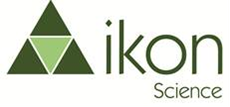Rock Physics SIG: Deciphering the Electrical Conductivity of Inorganic Shale* - Jun 6th

Sponsored by CGG and Ikon Science
Event Location:
CGG
10300 Town Park Dr.
Houston, TX 77072
NOTE: You Must be Logged In to Register.
Speaker: James T. Krushin, Consulting Geologist
About 70% of a sedimentary basin is composed of shale. The term “shale” is used here as a general classification of predominately fine-grained clastic rocks, without regards to laminations, fissility, or anisotropy. Unlike the many recent resource investigations of organic shales, the electrical properties of inorganic shale are rarely studied. One important, commonly used, industry application of inorganic shale electrical resistivity (i.e., inverse of conductivity) is to infer compaction and pore pressure. Typical petrophysical parameters controlling bulk rock electrical conductivity (Co) of clay-rich rocks are porosity, formation factor, pore water conductivity (Cw), and bulk cation exchange capacity (CEC). The porosity variable must be integrated onto a compaction model. These parameters should be accounted for when utilizing resistivity logs for shale compaction and pore pressure interpretation. Because of the inherent low permeability and swelling nature of shale, measuring bulk electrical conductivity with variable brines and maintaining constant porosity is extremely difficult and impractical. A petrophysical reinterpretation of published soil lab-studies are used as a surrogate for shale bulk conductivity response with different brine salinity. These studies show pure clay and sand/clay mixtures saturated with various brines and water contents, i.e., saturated porosity. For each sample, they measured the resulting electrical conductivity. A typical shaly sand response would show bulk conductivity (Co) increasing as the saturating brine conductivity (Cw) increases. In stark contrast to the typical shaly sand response, the soil data, here treated as shale, show no change in Co, as the saturating solution is varied from 800 to 8,000 ppm NaCl. An additional published study suggests these brines are representative of bulk water in natural shale. This constant Co, with varying Cw, is attributed to the electrical buffering effect of the exchangeable cations (CEC) in the shale. As the saturating brine salinity increases, more of the exchangeable cations migrate from the more mobile diffuse layer to the electrically less mobile Stern layer and vice versa. The net effect is a constant Co. These results are integrated with a thermodynamic-based shale compaction pore pressure model, which accounts for effective stress, temperature, and variable shale lithologies. This study increases shale compaction understanding and therefore aids with basin modeling, pore pressure and seismic interpretation, and increasing drilling safety and efficiency.
Speaker Biography: James T. Krushin, Consulting Geologist
Jim Krushin is a consulting geologist/petrophysicist with 35 years of experience working both domestically and internationally in the spectrum of single-well petrophysical interpretations, integrated field studies, and company appraisals. Prior to working as a consultant, Jim worked at the extinct Gulf Research and Development, Harmarville, PA and Amoco Production Company in Tulsa, OK, and Houston, TX in exploration/development and research. His interests include quantifying reservoir and seals’ petrophysical properties by combining core data with well logs. Recently, he developed a thermodynamically-based shale compaction/pore pressure model by utilizing water sorption isotherms. He continues to unravel some of the mysteries of inorganic shale by applying oil and gas petrophysical techniques to engineering studies of soils and clays.
Jim has both a BS and MS degrees in geology from the University of Pittsburgh and also is a graduate of Amoco’s yearlong Petrophysics Training Class, where his interest in the petrophysical properties of shale was piqued.
NOTE: You Must be Logged in to Register
5:15pm Refreshments
5:30pm Presentation Begins
6:30pm Adjourn
THANK YOU TO OUR GENEROUS SPONSORS:
GOLD SPONSOR:


